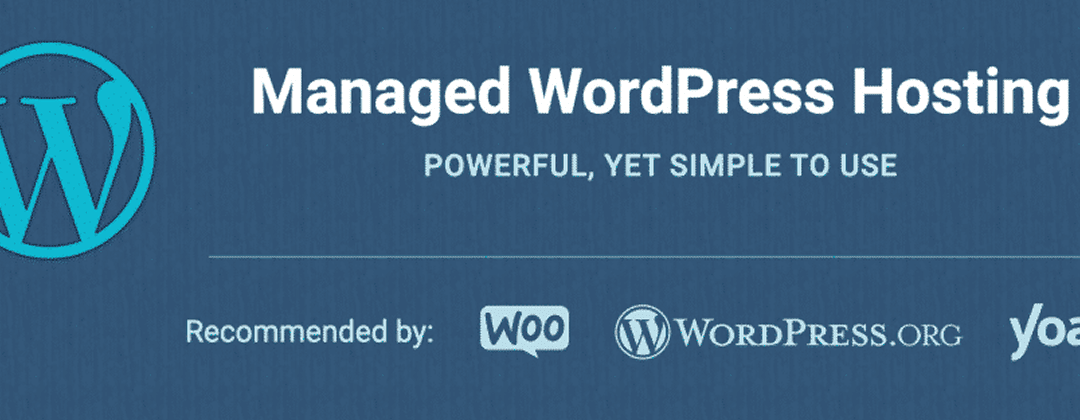In the fast-paced digital landscape, where first impressions matter, the longevity of a website is often defined by its ability to adapt and stay relevant. Aging websites, once cutting-edge, can now become stumbling blocks to success. This article explores the crucial importance of upgrading and redesigning an old website, shedding light on the benefits of breathing new life into your online presence.
The Evolving Digital Landscape:
1. Responsive Design and Mobile Compatibility:
In recent years, the rise of mobile browsing has revolutionized the way people access information on the internet. With smartphones and tablets becoming ubiquitous, users increasingly prefer the convenience of browsing on the go. This shift in user behavior underscores the paramount importance of ensuring that websites are not only responsive but also accessible across a myriad of devices. A responsive website design adapts seamlessly to different screen sizes and resolutions, providing users with an optimal viewing experience. Accessibility, on the other hand, ensures that individuals with disabilities can navigate and interact with the content effectively. Embracing responsive and accessible design principles not only caters to the diverse preferences of users but also enhances a website’s reach, user engagement, and overall user satisfaction in the ever-evolving landscape of digital connectivity.
2. User Expectations and Experience:
As user expectations for seamless and intuitive online experiences continue to evolve, there arises a critical need for continuous improvement in website design and functionality. Today’s users demand more than just static information; they seek dynamic, interactive, and effortlessly navigable platforms. This paradigm shift compels businesses and creators to stay abreast of emerging design trends, technological advancements, and user preferences. Constant innovation in website design is essential to not only meet but exceed user expectations. A website’s success is intricately linked to its ability to adapt to changing user behaviors, incorporate user feedback, and employ cutting-edge technologies. By embracing a mindset of perpetual enhancement, businesses can ensure that their online presence remains not only relevant but also resonant with users, fostering loyalty and satisfaction in an era where digital experiences shape perceptions and drive engagement.
The Benefits of Upgrading:
1. Improved Performance and Speed:
The impact of upgraded technologies and advanced coding practices on website speed and overall performance cannot be overstated in the realm of user experience. As technology continues to evolve, developers are adopting innovative techniques and frameworks that significantly enhance the efficiency of websites. From optimized images and efficient resource loading to the implementation of content delivery networks (CDNs) and accelerated mobile pages (AMP), these advancements contribute to faster loading times and improved responsiveness. Speed is integral to user satisfaction, as individuals increasingly expect instant access to information. A swift, responsive website not only minimizes bounce rates but also enhances engagement and user retention. By leveraging state-of-the-art technologies and coding practices, businesses can create a seamless online environment, ensuring that users experience the fluidity and speed they desire, ultimately fostering positive perceptions and bolstering overall user satisfaction.
2. Enhanced Security Measures:
Implementing the latest security features is paramount in safeguarding against evolving cyber threats and ensuring the safety of user data. As technology advances, so do the tactics employed by cybercriminals, making it crucial for organizations to stay ahead of the curve. The integration of cutting-edge security measures helps create a robust defense infrastructure, capable of detecting and mitigating a wide range of cyber threats, including malware, phishing attacks, and data breaches. This proactive approach not only protects sensitive user information but also enhances trust and confidence among users. With the increasing frequency and sophistication of cyber attacks, investing in the latest security technologies is an essential step toward maintaining the integrity of systems, preserving privacy, and upholding the overall resilience of digital ecosystems.
3. SEO Boost for Visibility:
Modernizing a website can have a transformative impact on its search engine rankings, ultimately boosting visibility and driving increased traffic. Search engines prioritize user experience and relevancy in their algorithms, and modernized websites are better equipped to meet these criteria. By adopting responsive design, optimizing for mobile devices, and ensuring fast page loading speeds, a website becomes more user-friendly, leading to improved search rankings. Additionally, incorporating the latest SEO best practices, such as relevant and high-quality content, proper use of keywords, and adherence to search engine guidelines, enhances a website’s visibility in search results. As search engines continually evolve, staying current with web design trends and technological advancements ensures that a website remains competitive in the digital landscape, attracting a broader audience and increasing organic traffic. In essence, modernizing a website is not just a cosmetic upgrade; it’s a strategic move that positively influences its search engine performance and overall online presence.
Redesigning for Visual Appeal:
1. Contemporary Design Trends:
Staying current with design trends is instrumental in enhancing the visual appeal of a website, captivating visitors, and fostering engagement. Web design trends evolve to meet the changing preferences of users, and adopting these trends ensures that a website remains visually appealing and resonates with contemporary aesthetics. A visually pleasing website not only creates a positive first impression but also establishes credibility and professionalism. Incorporating elements like clean layouts, intuitive navigation, and aesthetically pleasing visuals contributes to a seamless and enjoyable user experience. With attention spans becoming shorter in the digital age, a visually engaging website can captivate visitors, encouraging them to explore further and increasing the likelihood of conversions. In a competitive online landscape, where users are exposed to myriad options, staying current with design trends is a strategic imperative to stand out, leave a lasting impression, and maintain a vibrant online
2. Branding and Identity:
Website design plays a pivotal role in not only reflecting but also reinforcing a brand’s identity, contributing significantly to brand consistency across all online touchpoints. A well-designed website acts as a digital ambassador, visually communicating the brand’s values, personality, and essence to visitors. Consistency in design elements, such as color schemes, typography, and imagery, creates a cohesive brand identity that resonates with users across various online platforms. When a website aligns seamlessly with the established brand guidelines, it reinforces the brand’s authenticity and builds trust with the audience. Moreover, a consistent visual identity fosters brand recall, making it easier for users to recognize and remember the brand amidst the vast digital landscape. By ensuring that the website design mirrors the brand’s unique attributes, businesses can create a unified and memorable online experience, reinforcing their brand identity and leaving a lasting impression on visitors.
User-Centric Features:
1. Intuitive Navigation and User Interface (UI):
The importance of user-friendly navigation and UI enhancements cannot be overstated when aiming to create a smooth and enjoyable browsing experience for visitors. These elements are the backbone of a website’s usability, directly influencing how users interact with and perceive the platform. Clear and intuitive navigation ensures that visitors can easily find the information they seek, reducing frustration and encouraging longer stays on the site. User interface enhancements, such as well-designed menus, search functionalities, and interactive elements, contribute to a visually pleasing and efficient browsing experience. When users can effortlessly navigate through a website, they are more likely to engage with its content, leading to increased satisfaction and a higher likelihood of return visits. A seamless browsing experience not only reflects positively on the brand but also enhances user retention, ultimately contributing to the success and effectiveness of the online presence. In a competitive digital landscape, prioritizing user-friendly navigation and UI design is a strategic approach to captivate and retain a diverse audience.
2. Integration of New Technologies:
Incorporating new technologies, such as chatbots, interactive elements, and multimedia, is a strategic move to stay ahead in the dynamic digital landscape, offering a myriad of benefits for both businesses and users. Chatbots, powered by artificial intelligence, enhance customer interaction by providing instant responses and support, improving overall user experience. Interactive elements, like quizzes, polls, and interactive maps, engage visitors and encourage active participation, fostering a deeper connection with the content. Furthermore, the integration of multimedia, such as videos, infographics, and immersive visuals, not only enriches the user experience but also caters to diverse preferences for consuming information. Embracing these technologies not only sets a website apart but also reflects an organization’s commitment to innovation and adaptability. As user expectations evolve, staying at the forefront of technological advancements positions a business as forward-thinking and enhances its competitiveness in the digital realm, ultimately leading to increased user engagement, retention, and overall success.
The Redesign Process:
1. Content Audit and Optimization:
The significance of revisiting and optimizing website content lies in its ability to ensure alignment with current business goals and evolving audience needs. Content serves as the voice of a brand, conveying its values, offerings, and messages to the audience. Regularly revisiting and updating this content is essential to reflect changes in the business landscape, such as new products, services, or strategic directions. Moreover, as audience preferences and search algorithms evolve, optimizing content ensures that it remains relevant and discoverable. Tailoring content to address the specific needs and interests of the target audience enhances engagement and fosters a deeper connection. By continuously refining and optimizing website content, businesses demonstrate their commitment to providing valuable and up-to-date information, establishing trust with their audience and staying competitive in an ever-changing digital environment.
2. User Feedback and Testing:
Emphasizing the importance of gathering user feedback and conducting thorough testing during the redesign process is pivotal in creating a website that addresses potential issues and refines the user experience. User feedback provides valuable insights into how real users interact with the redesigned interface, uncovering areas for improvement and highlighting aspects that resonate positively. Conducting testing, including usability testing and A/B testing, allows designers to identify any usability challenges, technical glitches, or design flaws that may impact the user experience negatively. This iterative process not only helps in addressing specific issues but also ensures that the final design aligns closely with user expectations and preferences. By involving users in the feedback loop and rigorously testing different elements of the redesign, businesses can fine-tune their websites to perfection, delivering a seamless and user-friendly experience that ultimately leads to higher satisfaction and engagement.
Conclusion:
An aging website need not be a digital relic but rather a canvas for transformation. By embracing the importance of upgrading and redesigning, businesses can breathe new life into their online presence, fostering growth, improving user satisfaction, and ultimately thriving in the ever-evolving digital landscape. It’s time to revitalize, redesign, and reignite your online journey.
If you need help upgrading and redesigning your current website, please let us know! We are here to help.






